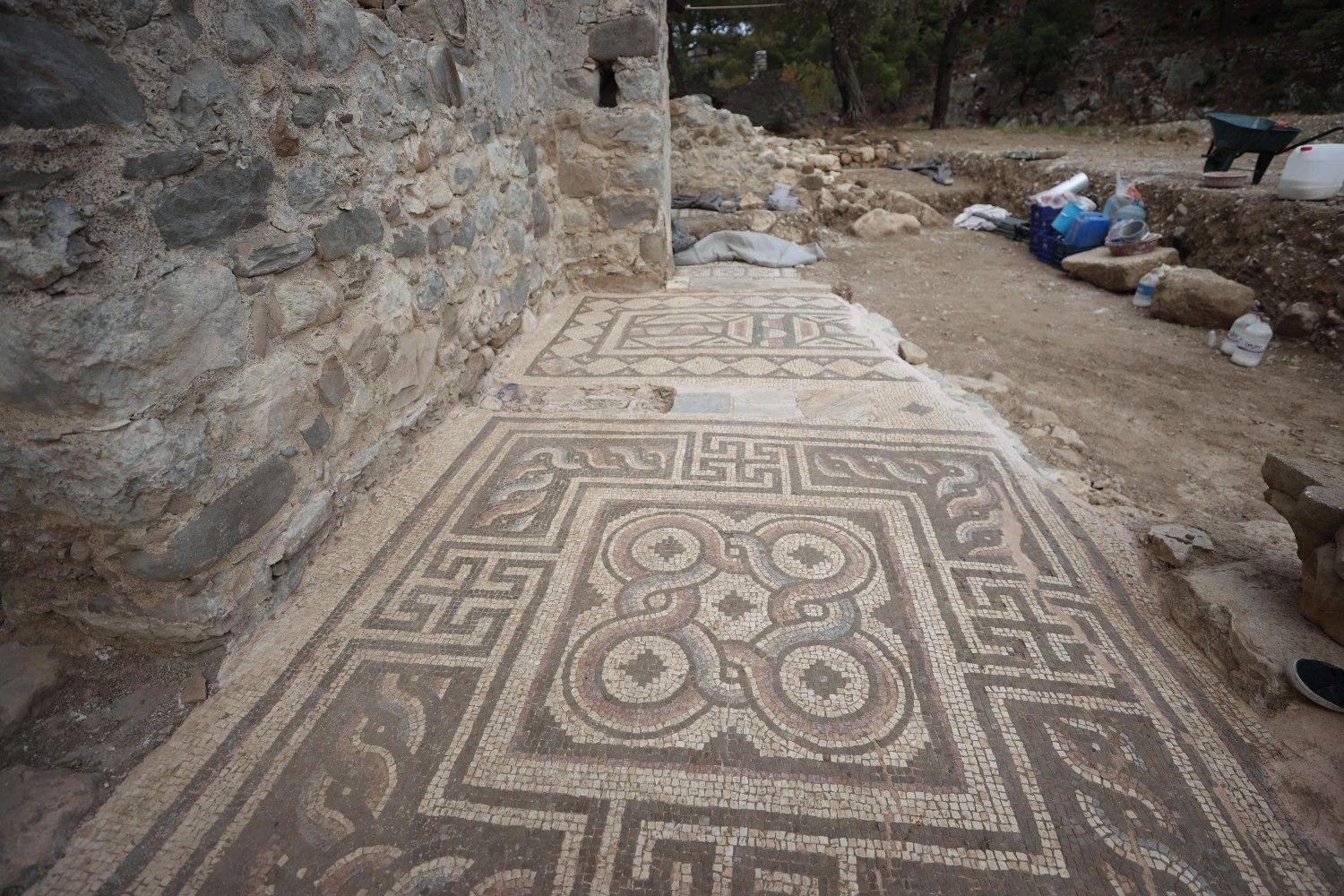
Archaeologists have uncovered a large bath complex in the ancient city of Olympos in the southwestern province of Antalya’s Kumluca during ongoing excavations as part of the Culture and Tourism Ministry’s Heritage for the Future Project.
Measuring nearly 200 square meters, researchers say the bath was part of a civil residence belonging to a bishop.
Situated within the boundaries of Beydağları Coastal National Park, Olympos has been the subject of systematic excavations since 2006.
Once among the six most prominent cities of the Lycian League, it held three votes in the federal assembly, reflecting its political and economic influence.
Excavation Director Gökçen Kurtuluş Öztaşkın explained that the current works focus on structures spanning Hellenistic, Roman and Byzantine periods, revealing layers of history that shaped the region.
"This year, we concentrated on necropolis areas, baths, domestic structures and churches," Öztaşkın said. "At the city’s entrance, we uncovered the floor of what we call Church No. 1. The entire surface was covered with mosaics made using the opus tessellatum technique, featuring broad geometric patterns."
Both the main hall and an adjacent room in the church feature geometric and botanical motifs, along with inscriptions. One such inscription, located directly in front of the church’s entrance, reads: "Only those on the righteous path may enter here."
Among the season’s most striking discoveries is the bishop’s residence with its adjoining bath complex.
"Domestic baths are usually modest in scale. Yet here, we encountered an unusually large example, nearly 200 meters, with a fully preserved heating system, furnace section, wall heating channels and wall coverings. For the Late Antique period, this is a rare find," Öztaşkın noted.
The scale and sophistication of the architecture led researchers to conclude that the residence belonged to a bishop, who, by the fifth and sixth centuries A.D., functioned not only as a spritüal leader but also as an administrative authority in Byzantine cities.
"The bath was not solely for private use," Öztaşkın said. "It had entrances opening both to the street and to the residence. On certain days, the bishop allowed townspeople to use it free of charge, as a form of public service promoting hygiene and health."
The excavation team is also advancing restoration efforts. Last year, they recovered two sarcophagi broken into 370 fragments.
"Our conservators painstakingly pieced them together, like assembling a giant puzzle," Öztaşkın explained. "They were reerected on site for display. By the end of the year, we will have restored a total of four sarcophagi to their original form."
As work continues year-round in six different sites across Antalya, the discoveries at Olympos are helping scholars reconstruct not only the city’s architectural landscape but also the rhythms of its daily life.